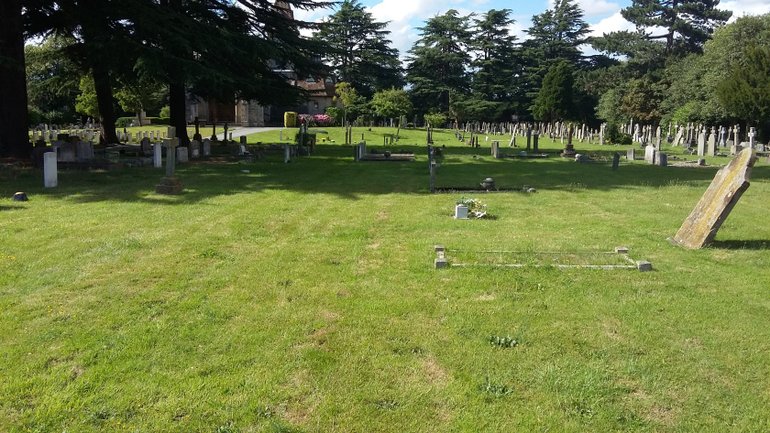
Even for an inmate who would spend her life in a workhouse, the scene that greeted Lucy Freeman in February 1839 would have been hard to endure. Faced with the lifeless body of 13-month-old John Truss, the laundry worker tried in vain to wake the boy before summoning help.
There was nothing that could be done, John’s life had been cut short as the result of a gas leak. A cursory handwritten note of Lucy’s inquest evidence a few days later records her efforts to rouse the infant and makes reference to her being the daughter of Mary, another inmate. The coroner recorded a verdict of accidental death in documents held in the archives at the Shakespeare Birthplace Trust.
Remarkably, Lucy spent 74 years at the workhouse in Stratford-upon-Avon despite grim conditions that led many to move on as soon as possible. She entered the institution as a child when it was located at the top of Henley Street, literally a stone’s throw from Shakespeare’s birthplace, and moved with it to an austere, purpose-built building in Arden Street. She seems to have become a mother figure who loved children and would save what little she had to buy them presents. Lucy was praised for her “wonderful record” after her death in 1911, aged 90.
Historian Robert Bearman, writing in Stratford-upon-Avon: A History of its Streets and Buildings, describes how such institutions were an attempt to alleviate the social ills accompanying urban expansion in the 19th Century. “Workhouses were grim places where conditions were made deliberately harsh to deter all but the destitute from seeking help,” Bearman writes.

Yet the tragedy must have had quite an effect upon Lucy, who would spend the rest of her life nursing hundreds of children at the institution. She would spend months before the annual Mop Fair saving pennies to buy children’s toys. Nicholas Fogg, writing in Stratford-upon-Avon the Biography, observes: “Visitors made a point of asking to see her and she rarely allowed such an occasion to pass without demonstrating a few dainty dancing steps from another era.” Lucy spent her final years in the infirmary and met a peaceful end; falling asleep shortly before she was due to eat lunch one day.

The rules and regulations of the workhouse held by the Shakespeare Birthplace Trust are comprehensive and give an indication of how difficult life must have been. A timetable that had to be observed by inmates shows how life was regulated by an unrelenting grind. From March 25 to September 29 the hour of rising was 6am. Work began an hour later and continued until 6pm with inmates going to bed two hours later. The timetabled day was one hour shorter in the winter. Unsurprisingly, premature deaths were not unusual and at least one, taking place in 1870, was covered up by the authorities. However Lucy was not alone in surviving the daily travails into an advanced age. William Stanley, another inmate known as the Duke, lived to 101.
Deciphering the faded, barely-legible handwriting and other clues gives little indication of how Lucy ended up in the workhouse, but it must have been a sad and lonely start in life. It makes one wonder how many of the inmates were simply left in such institutions and forgotten about. According to the records, Lucy was deemed an “‘imbecile” as an child, which appears to be contrary to her evidence at the inquest of John Truss and may have reflected the judgement of being born out of wedlock.
Lucy’s death was announced in September 1911 by the workhouse’s master Daniel Pickett at a Board of Guardians meeting, which was covered by the Stratford Herald.
At the end of the meeting Mr Parrott, one of the guardians who ran the institution, made reference to female inmates at Hatton Asylum being supplied with a new dress, with the exception of one girl on the basis she would not attend church. He asked for enquiries to be made to see if there was any truth in the report and whether such a boycott was even possible. Mr Hawkes, a fellow guardian, drew a quick conclusion after ascertaining that the girl was an inmate. He said: “Then presumably she is insane.” Mr Parrot replied “I don’t think so but I may have more to say on the subject later.”
It could well be that Lucy and other women had their lives defined by this blunt system of governorship. Lucy is praised, albeit in passing, in another meeting; a guardian named Mr Moore is reported as alluding to her “wonderful record” after her death.

I found records relating to Lucy on the Stratford Town Hall cemetery website and armed with the grave number 1875 I attempted to locate her final resting place. By chance and sheer good fortune I met the attendant and after checking the exact location he strode out with purpose counting his steps and looked down when he reached the destination. All that stands there now is grass, there is no memorial or headstone. Presumably the ground around the grave contains the last resting place of other workhouse inmates. In death, as in life, Lucy’s background appears to have been a major decisive factor.
However I daresay that in over seven decades in the workhouse Lucy witnessed more slings and arrows of outrageous fortune than many more prominent Stratfordians.

Originally published on Much Ado Warwickshire. Republished with kind permission from the author.
